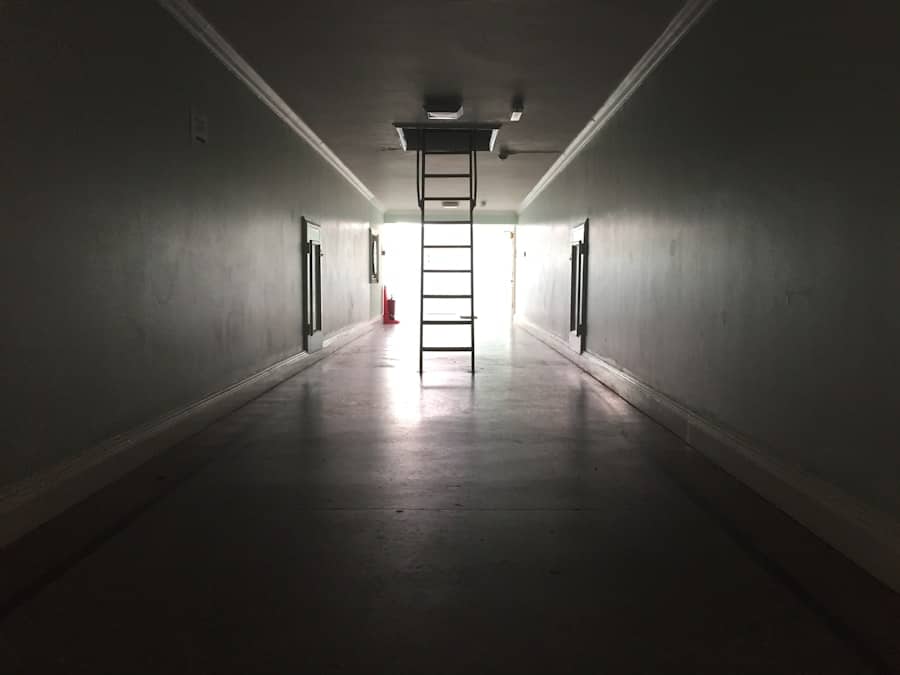In recent years, the entertainment landscape has witnessed a remarkable transformation with the advent of virtual reality (VR) technology. Among the most exciting developments in this realm is the emergence of VR escape rooms, which have rapidly gained popularity as a unique form of interactive entertainment. Unlike traditional escape rooms that rely on physical puzzles and real-world environments, VR escape rooms transport players into immersive digital worlds where they can solve challenges and unravel mysteries.
This shift has been fueled by advancements in VR technology, making it more accessible and affordable for both consumers and businesses. The rise of VR escape rooms can be attributed to several factors, including the growing interest in immersive gaming experiences and the increasing availability of VR hardware. As headsets like the Oculus Quest, HTC Vive, and PlayStation VR have become more mainstream, a wider audience has been introduced to the possibilities of virtual reality.
Additionally, the COVID-19 pandemic accelerated the demand for socially distanced entertainment options, prompting many escape room businesses to pivot towards virtual experiences. This transition not only allowed them to continue operating during lockdowns but also opened up new avenues for creativity and innovation in game design.
Key Takeaways
- Virtual reality escape rooms are becoming increasingly popular, offering a new and immersive way to experience the thrill of solving puzzles and escaping from a virtual environment.
- Immersive experiences in VR escape rooms allow players to feel fully immersed in the game, with realistic graphics and interactive elements that enhance the overall experience.
- VR escape rooms offer a social aspect, allowing players to interact with each other in the virtual environment, making it a great option for team-building and socializing with friends and family.
- Advantages of VR escape rooms over traditional escape rooms include the ability to customize and change the virtual environment, as well as the flexibility to play from anywhere with an internet connection.
- The future of VR escape rooms looks promising, with advancements in technology and accessibility making it easier for more people to enjoy these experiences.
Immersive Experiences in VR Escape Rooms
One of the defining features of VR escape rooms is their ability to create deeply immersive experiences that engage players on multiple sensory levels. In these virtual environments, participants can interact with their surroundings in ways that traditional escape rooms cannot replicate.
This level of immersion enhances the overall experience, making it feel more like a cinematic adventure than a simple puzzle-solving exercise. The design of VR escape rooms often incorporates intricate storytelling elements that draw players into the narrative. Each room typically has its own unique theme—ranging from sci-fi adventures to historical mysteries—complete with detailed graphics and soundscapes that enhance the atmosphere.
For example, a space-themed escape room might feature zero-gravity puzzles and alien encounters, while a medieval castle could involve solving riddles to unlock ancient secrets.
The Social Aspect of VR Escape Rooms

While VR technology is often associated with solitary gaming experiences, VR escape rooms emphasize social interaction and teamwork. These experiences are designed for groups, allowing friends, family members, or colleagues to collaborate in solving puzzles and overcoming challenges. The shared experience of navigating a virtual environment fosters communication and camaraderie among participants, making it an ideal activity for team-building events or social gatherings.
Moreover, many VR escape rooms incorporate multiplayer features that enable players to interact with each other in real-time, regardless of their physical location. This capability has become particularly relevant in an increasingly digital world where remote interactions are commonplace. Players can join friends from different cities or even countries to embark on a virtual adventure together, breaking down geographical barriers and expanding the reach of social gaming experiences.
The ability to share moments of triumph or frustration while working towards a common goal enhances the overall enjoyment and strengthens relationships among participants.
Advantages of VR Escape Rooms Over Traditional Escape Rooms
VR escape rooms offer several distinct advantages over their traditional counterparts, primarily due to their flexibility and innovative design possibilities. One significant benefit is the ability to create limitless environments that would be impractical or impossible to construct in the physical world. For instance, a VR escape room can transport players to fantastical realms or futuristic landscapes that defy the laws of physics, providing an experience that is both visually stunning and intellectually stimulating.
Additionally, VR escape rooms can accommodate a larger number of players without the constraints of physical space. Traditional escape rooms often have strict limits on group size due to the size of the room and the number of available puzzles. In contrast, virtual environments can host multiple players simultaneously, allowing for larger groups to participate without compromising the quality of the experience.
This scalability makes VR escape rooms an attractive option for corporate events or large gatherings where team dynamics are essential.
The Future of VR Escape Rooms
As technology continues to evolve, the future of VR escape rooms appears promising and full of potential. One area poised for growth is the integration of artificial intelligence (AI) into these experiences. AI can enhance gameplay by creating dynamic narratives that adapt based on player choices or skill levels, ensuring that each session feels unique and tailored to the participants.
This level of personalization could significantly increase player engagement and satisfaction. Moreover, advancements in haptic feedback technology may further elevate the immersive experience by allowing players to physically feel interactions within the virtual environment. Imagine solving a puzzle that requires manipulating objects with realistic tactile sensations or experiencing environmental effects like heat or cold as part of the narrative.
Such innovations could blur the lines between reality and virtuality even further, making VR escape rooms an increasingly compelling form of entertainment.
Accessibility and Inclusivity in VR Escape Rooms

Accessibility and inclusivity are critical considerations in the design and implementation of VR escape rooms. As this form of entertainment becomes more popular, it is essential to ensure that individuals with varying abilities can participate fully in these experiences. Many developers are actively working to create VR escape rooms that accommodate players with disabilities by incorporating adjustable settings for visual and auditory elements or providing alternative input methods for those with mobility challenges.
Furthermore, some companies are exploring ways to make VR technology more accessible by offering lower-cost options or developing experiences that do not require specialized equipment. For instance, browser-based VR experiences can allow users to participate using standard devices like smartphones or computers, broadening access to those who may not own high-end VR headsets. By prioritizing inclusivity, developers can create a more diverse player base and foster a sense of community within the world of VR escape rooms.
The Role of Technology in VR Escape Rooms
Technology plays a pivotal role in shaping the experience of VR escape rooms, influencing everything from game design to player interaction. The use of advanced graphics engines allows developers to create visually stunning environments that captivate players from the moment they enter a virtual room. High-quality graphics combined with realistic sound design contribute to an immersive atmosphere that enhances storytelling and engagement.
Moreover, motion tracking technology enables players to interact with their surroundings in intuitive ways. By using hand controllers or even body tracking systems, participants can manipulate objects within the game world as if they were physically present. This level of interactivity not only makes puzzles more engaging but also allows for creative problem-solving approaches that can vary from one group to another.
As technology continues to advance, we can expect even more innovative features that will redefine how players experience VR escape rooms.
Tips for Enjoying VR Escape Rooms with Friends and Family
To maximize enjoyment when participating in a VR escape room with friends or family, effective communication is key. Before diving into the experience, it’s beneficial for participants to discuss their strengths and preferences regarding puzzle-solving styles. Some individuals may excel at logical reasoning while others might be more adept at creative thinking; understanding these dynamics can help teams strategize effectively during gameplay.
Additionally, embracing a spirit of collaboration is essential for success in VR escape rooms. Encouraging all team members to share their ideas and insights fosters an inclusive environment where everyone feels valued. It’s also important to remain patient and supportive throughout the experience; frustration can arise when puzzles become challenging, but maintaining a positive attitude can enhance group morale and lead to greater success.
In conclusion, as virtual reality technology continues to evolve and expand its reach within the entertainment industry, VR escape rooms stand out as a captivating blend of storytelling, teamwork, and immersive gameplay. With their unique advantages over traditional formats and an emphasis on social interaction, these experiences are poised for continued growth and innovation in the years ahead.
Virtual reality (VR) escape rooms are revolutionizing the landscape of social entertainment by offering immersive experiences that blend technology with teamwork. These innovative spaces allow participants to engage in complex puzzles and scenarios, fostering collaboration and communication in a virtual setting. For those interested in exploring how technology is reshaping various aspects of our lives, an insightful article on The Next Web provides a broader perspective on technological advancements and their impact on society. This piece complements the discussion on VR escape rooms by highlighting the broader trends in technology that are influencing entertainment and social interactions.
FAQs
What are VR escape rooms?
VR escape rooms are virtual reality simulations of physical escape rooms, where players are immersed in a digital environment and must solve puzzles and complete challenges to “escape” within a set time limit.
How do VR escape rooms work?
Players wear VR headsets and are transported to a digital environment where they can interact with objects and solve puzzles using hand-held controllers. The experience is often multiplayer, allowing friends to work together to solve the challenges.
What makes VR escape rooms different from traditional escape rooms?
VR escape rooms offer a more immersive and interactive experience, allowing players to explore fantastical environments and interact with objects that would be impossible in a physical space. They also often incorporate elements of storytelling and adventure.
Are VR escape rooms safe?
Yes, VR escape rooms are generally safe when played in a controlled environment. Players should follow guidelines for using VR equipment to avoid potential risks such as motion sickness or tripping over cables.
Where can I find VR escape rooms?
VR escape rooms can be found at dedicated VR arcades, entertainment centers, and some traditional escape room venues. There are also VR escape room experiences available for home VR systems.

